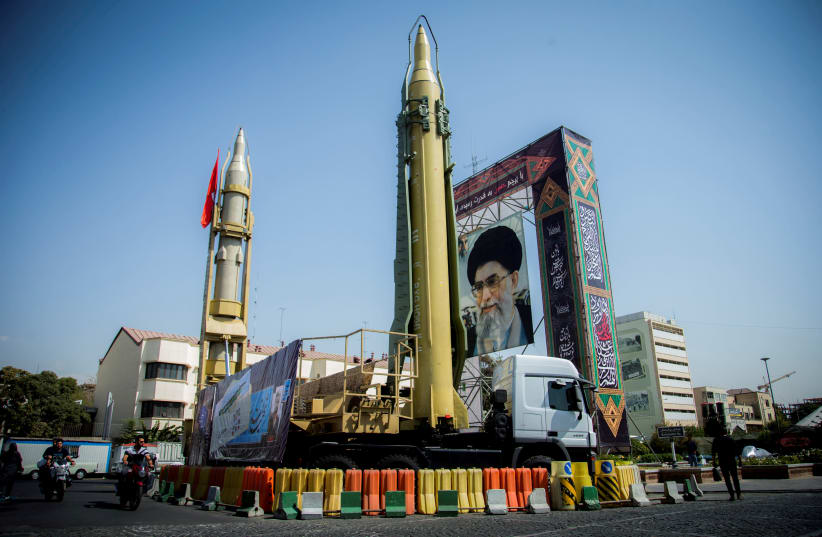Iran’s paramilitary Revolutionary Guard Corps launched a barrage of missiles into Iraqi Kurdistan on September 8, targeting the Kurdistan Democratic Party of Iran (KDP-I) headquarters and adjacent refugee camp, killing 16 people and wounding 40 more. The IRGC-linked Fars news agency released footage of strike and justified it as retaliation for an attack on a military post near Mariwan, west of Iran on July 21 – referring to a suspicious attack unlike those previously seen in Kurdish armed resistance against the Islamic Republic associated with the Kurdistan Free Life Party (PJAK), one of several armed Kurdish groups.
The Iranian Kurds have a rich history, a high degree of political awareness and considerable potential in Iran. They have long struggled for their civic and national rights, but the Iranian regimes have denied the legitimate demands of the Kurds throughout history. In 1979, the new Iranian regime, refused their demands with brutality, and Ayatollah Khomeini declared what he termed a ‘holy war’ on the Kurds. The Kurdish parties’ associated militant groups and paramilitary Peshmerga forces initiated armed resistance against the Iranian forces. Intense fighting between regime forces and Kurdish fighters flared in 1979 to 1982 and continued through the 1980s and beyond. Since 1996, following an effective political and military crackdown, the fight has transformed primarily into political opposition abroad with sporadic armed conflict.
The shape and nature of Kurdish politics has not been limited to armed resistance. In last decade, the KDP-I has pursued a nonviolent strategy focusing on civil activities inside Iran. They have encouraged NGOs to campaign for political engagement. The new policy is mainly known by the efforts of Khalid Azizi (former secretary-general of KDP-I). The centerpiece of this strategy is that the people who are acquainted with their legitimate rights can challenge the Islamic Republic in different fields. Rahman Piroti (a member of the KDP-I leadership committee), who was killed in the missile strike, had promoted this approach for years. He believed that frustration expressed in the streets is a real headache for the regime. Even after the missile strike, the party avoided a violent reaction and called for general strike, which aroused positive responses in Kurdish areas of Iran.
The Kurdish parties in Iran have taken important steps toward activism and this has caused political turmoil in Tehran, fearing that these parties might garner international or regional support. However, because it is difficult to believe that the Kurdish pressure on the regime had reached a level to make a missile strike a necessity, political observers are disinclined to interpret the purpose of the missile strike to be as it was formally advertised by IRGC. Many observers stated that the missiles were intended to carry a warning message.
According to the Heritage Foundation, “Iran’s ballistic missiles pose a major threat to US bases and allies from Turkey, Israel and Egypt in the west, to Saudi Arabia and the other Gulf States to the south, to Afghanistan and Pakistan to the east.” Among these, Israel is most at risk from an Iranian attack. Iran even inscribed the words “Death to Israel” on missiles recently fired to Abu Kamal in southeastern Syria. Israel is protected with multi-tiered missile defense systems, but still it can be hit by the thousands of short-range rockets that Iran has supplied to Hezbollah in Lebanon and Hamas and Palestinian Islamic Jihad in Gaza.
In the earlier case of targeting Islamic State positions in eastern Syria’s Deir el-Zour on June 18, anonymous Israeli security sources sneered that all but one of the missiles missed their target. But this time, the precision was notable. Striking the KDP-I headquarters with Fateh-110 missile series, “one of the missile varieties that Israel’s Magic Wand weapon system is meant to combat” may be a response to those sneers by demonstrating that “our missiles are precise enough to target your military bases and populated areas.” It can be seen as catalyst for more systematic missile attacks as well.
On November 6, 2017, Kayhan, an Iranian newspaper close to the Supreme Leader ran a controversial headline that Houthi rebels in Yemen will next target Dubai, after firing a ballistic missile at Riyadh’s airport. It also added that Dubai, in the United Arab of Emirates, Riyadh, Jeddah, and Saudi’s oil and gas company Aramco will be next targets for the missile attacks. On July 25, 2018, Kayhan reiterated: “Missiles On Their Way: Evacuate Dubai, Abu Dhabi and Riyadh.” The choice of words was considered an IRGC maneuver, but when populated areas in Saudi Arabia were targeted by Houthis, shockwaves resounded.
The Iranian regime has fully resumed funding, as well as providing equipment, weapons, training and sanctuary to terrorists. Moreover, it has added the missiles strikes to this list. With Iran continuing to perfect its ballistic technology and extend its missile range, warnings of an incoming attack must be always on. While Hezbollah is hiding rockets in Beirut, Houthis are continuously launching missiles toward Riyadh; the IRGC-linked Shia militia is firing missiles toward the US bases and consulate, and Tehran is signaling, “Israel must be wiped off the earth” to the world.
Every man, woman and child in the region remains under a missile sword of Damocles and can be struck at any moment by accident or miscalculation or by growing international pressures.
